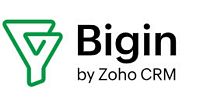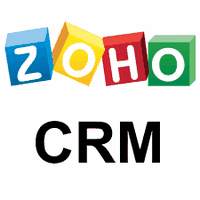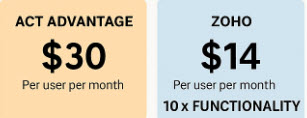 This being Easter weekend I thought I’d share a couple of my favorite ACT Easter eggs. In case you’re not familiar with the term, a software Easter egg refers to a bit of hidden code in the software. Although these Easter eggs are all represented by fields and aren’t necessarily hidden, they do tie into other parts of ACT which you might not be aware of.
This being Easter weekend I thought I’d share a couple of my favorite ACT Easter eggs. In case you’re not familiar with the term, a software Easter egg refers to a bit of hidden code in the software. Although these Easter eggs are all represented by fields and aren’t necessarily hidden, they do tie into other parts of ACT which you might not be aware of.
- ID/Status: Although I hate the name, I love the field. Think of this as the main category that a contact record belongs to. You’ll need this field to easily reach various segments within your database. Out of the box, the ID/Status drop-down list is a bit long so you’ll want to pare it down to 8-12 items. Typical choices consist of Customer, Prospect, Vendor and Personal but you can modify the drop-down as needed. The entire database of a blood lab I work with consists of patients so their ID/Status options refer to insurance type such as Aetna, Humana and Blue Cross. The Easter egg here is that you can easily tie the ID/Status field to the contents of a dynamic ACT group; for example, you might create a group that automatically displays all of your .customers that you haven’t contacted in over a month.
- Referred By: If your business is booming and you have no desire to see it grow, or if you’re not worried about the ROI of your marketing efforts, then you don’t need to use this field. And, if you’ve opted to create your own “Lead Source” or other similar field you’re missing the boat to some very powerful functionality. The Easter egg here is that the data in this field flows directly into the Source of Referrals report. For example, you could create a Lookup of your top customers, run the Source of Referrals report and see where all those folks came from; alternatively you could query one of your recent marketing campaigns, run the report, and get a feel for how many new customers you attracted.
- Last Results: Most marketing analysts agree that you need to contact a cold prospect an average of ten to twelve times before they convert to a customer. Statistically 50% of sales people give up after one attempt, and a whopping 90% give up after two. Yikes! All too often sales teams make a half-hearted effort to contact prospects, or zealously attack a new prospect list for only a very short period of time. The Last Results field is a great way to set up an organized plan of attack. I like to number the drop-down list items to include entries such as “1 – Sent introductory e-mail” and “8 – No Interest at this time.” The hidden benefit here is that this field automatically creates a time-stamped entry on the History tab that reflects the date of your last action.
- Record Manager: Quite simply, the Record Manager is the person in your organization who is responsible for a contact. Sure you could create a “sales person” or “rep” field but then you’ll be missing the chance to find another Easter egg. The benefit here is that any of the reports that measure the activities of your sales people include filters based on the Record Manager.
Enjoy your Easter eggs!





I am very interested in your Referred By easter egg note, and am trying to figure out how to apply it to what I currently do with Goldmine.
I need a report that tells me who referred who. I see that I can use ACT’s relationship tab with this, but don’t quite see how to run a report that ideally would give me that info, ideally sorted by Referred By field, for a specific time period.
Any ideas?
That’s the Easter Egg! Create a Lookup of all the contacts that were created during a specific time period that have an entry in the Referred By field. The run the Source of Referrals report based on the current Lookup.